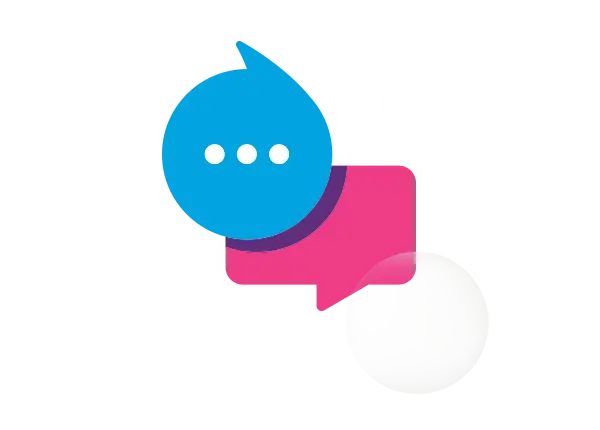From 40-second shops to cashier-free experiences – consumer-owned device mobile self-scanning (BYOD) is booming. But as more and more customers shop, scan and go on their own devices, it’s become clear that not every retailer is able to keep mobile shopping moving seamlessly. In fact, unexpected interruptions are adding friction to what should be a faster, more intuitive, and less frustrating method of shopping.
Here’s Flooid’s take on reducing friction in BYOD.
What is driving BYOD growth?
Retailers have been offering self-scanning options using provided handheld scanners for well over a decade. These devices were largely part of the benefit of belonging to a loyalty program and enabled consumers to scan their items ahead of payment at a traditional assisted POS or Self-Checkout. Growing smartphone usage, pandemic-related fear of personal interaction and breakthrough technologies as well as adoption of mobile payment like Apple Pay and Google Pay have led to an explosion of Bring Your Own Device (BYOD) retail journeys. Consumers can now use their own mobile phone to scan items and pay for their entire shop without the need to approach a physical point of sale register. Grocery and convenience retailers have led the charge with BYOD, but other retail verticals are catching up.
“I was able to buy lunch in under 40 seconds – in fact, it was more like 15 seconds.”
Who is offering BYOD?
BYOD pre-dates the pandemic and has been rapidly expanding across Europe for over a decade, but usage has grown exponentially over the past two years. Marks & Spencer was a pioneer with its Mobile Pay Go capabilities, launched across six stores in 2018. Mobile Pay Go enabled customers to use their smartphones to scan items via an M&S consumer app, which was linked to its loyalty program Sparks. Take-up of this ‘40 second shop’ technology was strong, and the program was swiftly rolled out across every M&S food store. Other global grocery and convenience leaders including Walmart, 7-Eleven and Waitrose now offer BYOD shopping. According to RBR, by June 2021, 32,000 stores across the world were allowing customers to use mobile self-scanning.
How does BYOD work?
Most BYOD capabilities are built on two key technology enablers. The first is a branded consumer facing app which any individual can download onto their smartphone. These apps typically include a barcode and/or QR code scanning capabilities which use the smartphone’s camera. The consumer’s loyalty membership is used as identification and can default entry of information like preferred store location. Payments can be made via the app, scanning a QR code or via digital payment methods like Apple Pay or Google Pay. The best of these ‘front-end’ apps are attractive, robust and simple and intuitive to use.
The second key technology processes all transaction information and is the engine of the BYOD experience. Leading ‘back-end’ platforms ensure that every piece of applicable information, including price, promotions, loyalty, tax and receipts data can be easily surfaced by the consumer app in real-time. This means customers are recognised for their loyalty, have seamless and consistent shopping experiences across all shopping channels, and can receive highly personalised offers based on their previous purchases or individual tastes.
What are the issues with some BYOD journeys?
Customers value BYOD journeys because they give them more autonomy over how they shop, and often cut time spent in-store. But unforeseen circumstances can cause frustration in BYOD shopping journeys. What happens if the phone runs out of battery mid-shop? Will the shopper have to re-scan their items if they accept an incoming call? Can the shopper stay in the app while they FaceTime a friend or relative to check that they are buying the right ingredient? Will a security check interrupt the shopping experience? What happens if there’s a WiFi outage?
Flooid – reducing friction in BYOD
Flooid reduces friction and adds resilience to BYOD journeys. Our unified commerce platform underpins leading mobile scanning programs for top tier retailers. The platform connects every customer touchpoint across web, mobile and store, seamlessly and instantly transferring all appropriate price, promotions, tax, receipts and rewards information between every endpoint. Better still, because Flooid maintains basket suspension, a customer doesn’t have to re-scan items if their shop is interrupted by a call, WiFi outage, FaceTime session or security check.
Another core benefit of the Flooid offer is freedom. Flooid allows retailers to work with their chosen app developers, or to build an app using their in-house teams. OS-agnostic, robust and flexible, Flooid’s unified commerce platform underpins some of the most exciting and large-scale commerce operations across the world today.
Flooid works with the largest retailers in the world. If you want to learn more about the capabilities of Flooid, contact us.
Flooid travaille avec les plus grands détaillants du monde. Si vous souhaitez en savoir plus sur les capacités de Flooid, contactez-nous.
3rd June 2025
Flooid Thinks: Quality with Paul Lynch
Flooid Thinks
27th May 2025
Flooid brings future-ready retail innovation to NRF APAC 2025
Flooid Blog
20th May 2025
A year later: From roundtable reflections to retail reality with Jess Young, Store Manager at Morrisons
Flooid Blog
1st May 2025
Partnership Announcement: Flooid supports retailers’ regulatory needs with Fiscal Solutions
Flooid Blog
23rd April 2025
The evolution of checkout: From traditional POS to mobile experiences
Flooid Blog
31st March 2025
No Joke: London’s retail extravaganza begins tomorrow!
Flooid Blog
24th March 2025
Move fast and stay flexible
Flooid Blog
12th March 2025
Flooid Brings the Future of Retail to RTS 2025
Flooid Blog


